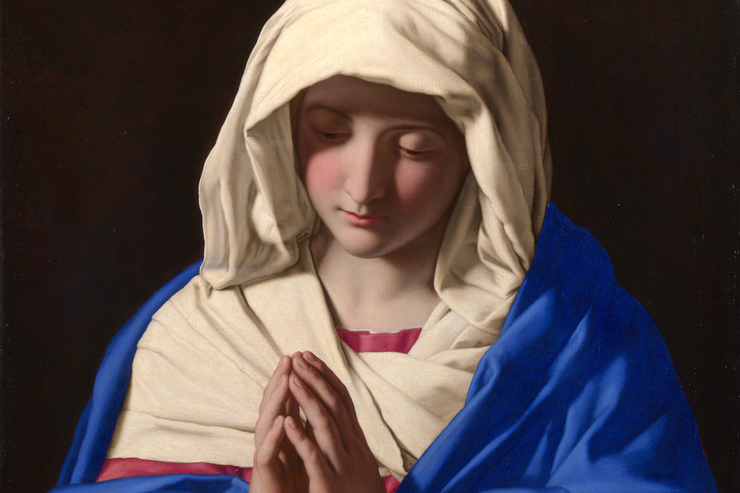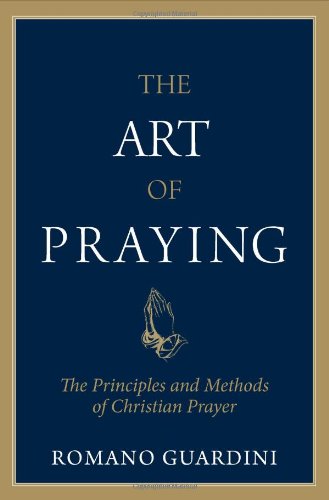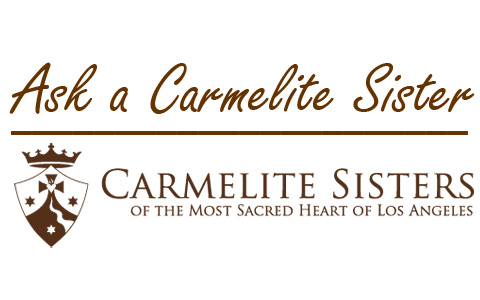
“The Virgin at Prayer” (detail) by Sassoferrato
“In the same way, the Spirit too comes to the aid of our weakness; for we do not know how to pray as we ought, but the Spirit himself intercedes with inexpressible groanings” (Romans 8:26).
Why do most people find it hard to pray… really pray? Prayer is our spiritual highway to God and we cannot arrive at that destination without developing a meaningful prayer life. In The Art of Praying: The Principles and Methods of Christian Prayer, Romano Guardini sets a path for those of us who seek to enrich and deepen prayer life. This book is not light reading; Father Guardini has produced a scholarly work that may require more study in parts. However, he has covered every aspect of prayer. If you are struggling with your prayer life—don’t we all?—this is a worthwhile read.
Prayer can be likened to art because all worthwhile art begins with some planning, initial effort, discouragement, and renewing. In fact, early in the book, he states that “If man merely followed his natural feelings he would soon have no desire to pray” (p.9). In this post-modern, technological age there are far too many distractions—some under our control and some heaped upon us smothering every effort to attempt even the shortest prayer. He asserts that faith is essential to prayer. There may be times when prayer falters, but, in the long run, faith without prayer is impossible.
Guardini writes that “prayer will be as good as the preparation for it.” In seeking God in prayer the “first step is self-recollection, the second is visualizing (before the inner eye) God’s reality. Third is seeking his holy face” (p.23).
 Realizing the holiness of God we come before Him in adoration and praise. This is a desire for God and full awareness of our sins and guilt with hope for the soothing grace that only he can give. We must never take our existence for granted. Thanksgiving and supplication should always be a part of our prayer. Everything we have or ever will have comes from God. He makes everything possible, and we must remember always that He knows our needs and what will be given to us according to His will. We glorify God by placing our needs before Him. Can we get these basic steps jumbled in our efforts to pray? Just remember: Adoration, Contrition, Thanksgiving, Supplication = A.C.T.S.
Realizing the holiness of God we come before Him in adoration and praise. This is a desire for God and full awareness of our sins and guilt with hope for the soothing grace that only he can give. We must never take our existence for granted. Thanksgiving and supplication should always be a part of our prayer. Everything we have or ever will have comes from God. He makes everything possible, and we must remember always that He knows our needs and what will be given to us according to His will. We glorify God by placing our needs before Him. Can we get these basic steps jumbled in our efforts to pray? Just remember: Adoration, Contrition, Thanksgiving, Supplication = A.C.T.S.
In our prayers it is important to understand the Trinity. Praying to Christ means entering into a relationship with him. Christ is the entry into the mystery of the Triune God. He is our way to the Father. Jesus says, “I am the way, and the truth, and the life. No man cometh unto the Father, but by me” (John 14:6). Guardini writes, “The Holy Spirit teaches us to understand Christ, and in Christ, God and ourselves. It is the kind of understanding which comes from the heart, not the intellect. It is true comprehension; more than that, it is illumination” (p.94).
In the section on oral prayer we learn the importance of spontaneous prayers. These are prayers from the heart in times of intense longing for God. Fr. Guardini writes that, “Only to a limited extent can the individual make up his own wording; the greater part of it he finds ready-made” (p.98). Spontaneous prayer allows us to communicate with God from our unique selves. Guardini writes, “If words do not come easily we should not immediately resort to established texts” (p.99). To continue in spontaneous prayer requires practice and deep devotion. However, there is such richness in familiar prayers that can teach us and which can express what can be difficult for us. The Psalms, the Rosary, Liturgies, to name a few, are all rich in the tradition of prayer in the church.
Inward or contemplative prayer does away with words and moves toward silence. In this type of prayer we seek to know God, seek knowledge of our place in the world in which He has placed us. We seek guidance. We cannot become dreamy or distracted. Guardini writes, “We must know where to begin and we must know what kind of subjects there are for contemplation. It could be some article of faith or some thought by an enlightened person.” This type of prayer takes practice and concentration and time. Placing our individual personality before Him is an intimate state that reaps rich rewards. We must understand that it involves God’s plan for us and is acquired by faith, grace and prayer.
The saints and the Blessed Mother are very present blessings in the life of Catholics. We pray to the saints for intercession and often in accordance with our needs in relation to the lives that they led. Mothers pray to St. Monica for their sons. St. Monica, mother of St. Augustine, prayed for years and years for her son’s conversion. St. Jude, patron of hopeless causes, has been invoked by many. The lives of the saints give inspiration and when we ask for their help and intercession, we are not only giving honor to them, but to God also. We venerate the Blessed Mother because of her unique place in Redemption. Guardini writes, “by contributing toward salvation in this unique way, she herself reached the fullness of Christian perfection. The ultimate motive which leads the believer to Mary is . . . the desire to be within the orbit of her holy life.”
Prayer in time of incapacity is difficult. We all go through periods of dryness and frustration in prayer. This can be caused by illness, grief, worry and depression, to name a few. These are times when trust and faith in God are tested and the ability to pray is crippled by the fact that “man does not enjoy prayer” (p.164). When we are tested, perseverance is of the utmost importance to regain our prayer and faith life. Guardini writes that “reverence is possible even when prayer is not. The main thing about this attitude is its intent. It aims through earthly things at things holy and divine to which, for the time being, it has no direct access.”
Personal prayer is different from Liturgical prayer and ritual. Catholics are obligated to attend Mass and it is during this time that we place ourselves before God for outward prayer and praise. “For where there are two or three gathered together in my name, there am I in the midst of them” (Matthew 18:20). The liturgical ritual is an end to itself—celebrating the Eucharist, which is the center of our Catholic faith—where we give ourselves wholly to God joined to the Sacrifice of Christ. Our personal prayer life should be nurtured every day. At times, just turning our thoughts to God; letting Him know we are aware of Him and His presence in our lives may be all we can manage. God knows that we seek Him and He is always there to answer us.
The Art of Praying: The Principles and Methods of Christian Prayer by Fr. Romano Guardini
Sophia Institute Press (September 15, 1995)
ISBN-10: 0918477344
ISBN-13: 978-0918477347














